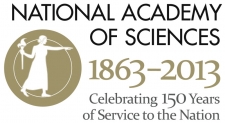By: Lauren M. Brown, Research Associate, National Academy of Sciences, Polar Research Board

Arctic research has gained substantial prominence during the last decade, as change in this region has been system-wide and has progressed at a rate exceeding expectations. Public attention has grown as well, a result of reductions in sea-ice, increased threats to homes from coastal erosion, loss of land ice and the implications for sea-level, thawing of permafrost and what that might mean for climate change and for Arctic and sub-Arctic infrastructure, and the exposure brought by the International Polar Year 2007-2008. Because of the unique challenges of conducting research in any polar environment, we often plan what research can be done rather than what might be done, allowing our vision to be constrained by practical limitations; but a big picture vision is valuable, even if not all can be made to happen, because it provides challenges and future directions.
The Committee on Emerging Research Questions in the Arctic was convened under the auspices of the U.S. National Academy of Sciences Polar Research Board in early 2013. Sponsored by NSF, the National Aeronautics and Space Administration (NASA), the National Oceanic and Atmospheric Administration (NOAA), the Department of Energy (DOE), the Smithsonian Institution, and the U.S. Arctic Research Commission (USARC), this activity is designed to provide guidance on future research questions in the Arctic over the next 10-20 years. The committee will identify the key scientific questions that are emerging in different realms of Arctic science, exploring both disciplinary realms (e.g., marine, terrestrial, atmosphere, cryosphere, and social sciences) and cross-cutting realms (e.g., integrated systems science and sustainability science). Based on the emerging research questions, the committee will also help identify research infrastructure needs (e.g., observation networks, computing and data management, ship requirements, and shore facilities) and collaboration opportunities. Attention will be given to assessing needs where there may be a mismatch between rates of change and the pace of scientific research. Although it is understood that there is no one answer, the committee is asked to explore how agency decision-makers might achieve balance in their research portfolios and associated investments (e.g., what are some of the challenges of trying to do both problem-driven research and curiosity-driven research?). The goal is to guide future directions in U.S. Arctic research so that research is targeted on critical scientific and societal questions and conducted as effectively as possible.
Committee members were selected through a careful process, and nominations were received from a wide range of academic, industry, and private sources. National Academies' committees are selected to ensure that they contain the full range of disciplinary perspectives, technical expertise, and diversity of views needed to address the statement of task in an independent and objective manner. This committee is co-chaired by Stephanie Pfirman and Henry Huntington. A full list of the 17 committee members and the statement of task can be found on the National Academies' current projects website.
Over the course of the past eight months, the committee has held two meetings, including a community workshop in Anchorage, Alaska. The two-day workshop (7-9 May 2013) was designed to allow broad community input in identifying research priorities. The committee interacted with numerous invited speakers and also developed an online questionnaire to allow for additional community participation.
During the coming months, the committee will continue to seek input from the Arctic community including a third meeting in Ottawa, Canada, to be held in conjunction with a Canadian Polar Commission meeting. The committee will use this opportunity to explore Canadian and international priorities for future Arctic research. Report writing will continue during fall 2013.
The report will undergo the National Academies' careful outside peer review process to ensure that the document addresses the statement of task and that it is accurate and comprehensive. Following the peer review process, the report will be released publicly and made available as a free PDF on the National Academies Press website. The report is expected to be publicly available in spring 2014. To sign up to receive a notification when the report is available, use the online form available here.
The Polar Research Board (PRB) is a unit within the National Academies and is responsible for studies related to the Arctic, Antarctic, and cold regions in general. More information about the PRB and other related activities can be found on their website.
